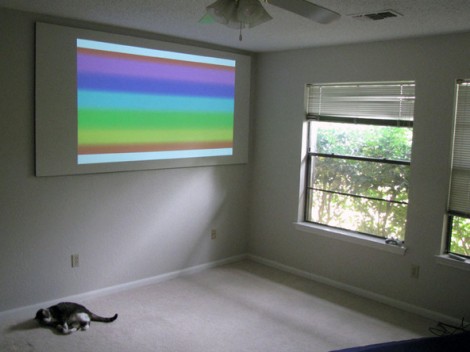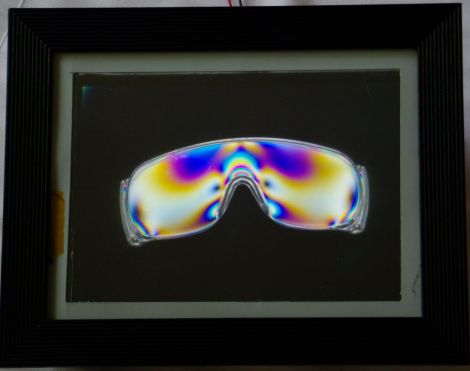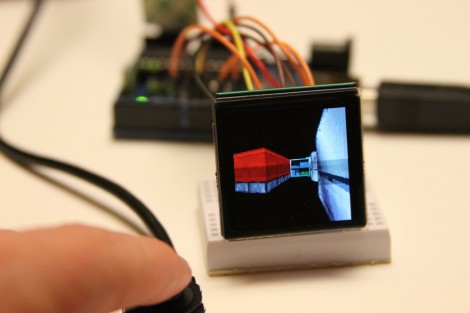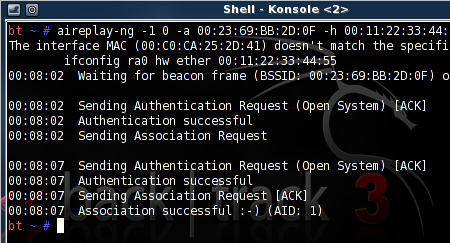
[Andrew’s] family has a rustic lake cabin. There is a lot to do during the day, but since there’s no electricity your options are limited when the sun goes down. Sure there’s the traditional campfire, but lately they’ve been spicing things up with an outdoor movie viewing.
To get this up and running they needed to build a projection screen. He’s going for a 2.35:1 aspect ration, but the technique will work for any aspect if you do your own math. They had a couple of extruded aluminum channels from an old chalk board which work perfectly as the top and bottom rails of the frame. With the width set at fourteen feet he just needed to mount the cross pieces on uprights at 5.95 feet apart. This provides a 183″ viewing surface.
White bed sheets serve as the screen material. After it’s stretched into place they line the rails with binder clips to hold it in place. The projector is powered from two 12V batteries via an 800W inverter. During the day the batteries get topped off by a solar panel system.
















